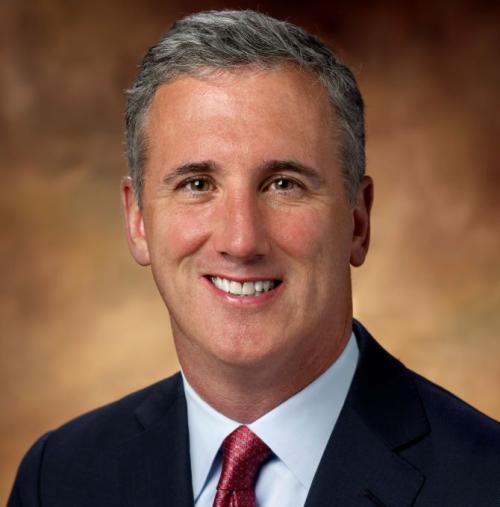The current excesses of C-suite compensation present a problem that has no easy solution
In October this year, Jean Tirole became the first French citizen in more than 20 years to win the Nobel Memorial Prize in Economic Sciences. The prize committee cited his research on government regulation as a contribution to ‘the science of taming powerful firms’.
Tirole, a professor at the University of Toulouse who focuses on industrial organization, game theory, banking and finance, sees a need for government intervention in business, especially in industries that may not be very competitive. In one of his most recent papers, Tirole and co-author Roland Bénabou, Theodore A Wells ’29 Professor of Economics and Public Affairs at Princeton University, take on the question of executive compensation, suggesting that the explosion in pay for top management has been harmful for companies.
‘Large bonuses and salaries are needed, it is typically said, in order to retain talent and top performers in finance, corporations, medicine and academia, as well as to incentivize them to perform to the best of their high abilities,’ the authors comment in the paper, the final version of which was published earlier this year.
‘The result is a bonus culture that takes over the workplace, generating distorted decisions and significant efficiency losses, particularly in the long run,’ the two academics write. The trend toward higher compensation, they conclude, ‘has been accompanied by mounting revelations of poor actual performance, severe moral hazard and even outright fraud’
A market failure
The paper, ‘Bonus culture: competitive pay, screening, and multitasking’, develops a model to show how market pressure has led to increases in executive pay. But it also demonstrates that excessive compensation represents a market failure because it can result in short-term thinking and outsized risk-taking at the expense of consumers and taxpayers, as evidenced most dramatically in the financial services industry and the reckless behavior that precipitated the 2008 financial crisis. (The full paper is available at Bénabou’s Princeton website, at www.princeton.edu/~rbenabou/papers.html.)
With their models, the authors show that labor market competition results in incentive pay exceeding the social optimum in industries with considerable competition as well as those sectors where a small number of companies collude to drive prices up or where a dominant buyer is able to drive prices down. ‘Competitive bidding for talent is thus destructive of work ethics, and ultimately welfare-reducing,’ the authors point out.
Government efforts to restore balance in agents’ incentives and focus by using regulation such as bonus caps or taxes on total compensation can be problematic. ‘The extent to which this is achievable depends on how well the government or regulator is able to distinguish the incentive from the fixed parts of compensation packages, as well as on the distortions that may arise as companies try to blur that line or resort to even less efficient screening devices,’ Tirole and Bénabou write. Other top academic experts echo this sentiment about the potential for effective regulation on the compensation issue.
‘I don’t think government regulation makes a lot of sense for pay,’ says David Larcker, a corporate governance expert at Stanford University. ‘It is very slippery to regulate.’ There are too many obvious workarounds to any restrictions, Larcker adds, and too many ways to construct a package so that it satisfies the legislation but still gives executives an outsized reward.
Perks of the job
When the UK tried to limit executive pay in the 1970s by imposing a high marginal tax rate, companies turned to alternative types of compensation in the form of perks such as fancy cars, private planes and shopping privileges at the local grocery store, recalls Michael Useem, a management professor at the Wharton School.
Tirole and Bénabou make the same point in their paper. Corporations can relabel fixed and variable compensation to evade bonus caps, so that only total pay can be regulated through taxation. Or they may switch to alternative forms of reward such as ‘permission’ to serve on the boards of other companies or engage in consulting, or lower lock-ins to a company in the form of low clawbacks and easier terms for resigning.
‘There is clearly a problem,’ says Jay Lorsch, the Louis Kirstein Professor of Human Relations at the Harvard Business School. ‘Unless you’re Rip Van Winkle and have been asleep for 20 years, you can see that. Top management pay is out of whack.’
Lorsch views the US government’s attempts to regulate pay as ineffective or counterproductive. Efforts by the Department of Labor to require pay scrutiny by fiduciaries, for instance, gave rise to proxy advisory firms that companies see as riven with conflicts of interest. An attempt to expand this requirement in 2011 met with so much opposition that it was quickly withdrawn. Shareholder votes on say-on-pay proposals that are not binding on companies or boards are not likely to be any more successful, Lorsch says.
For these academic experts, the question is not so much one of economics, but one of company culture and leadership. Solutions will be difficult to arrive at, but they lie in changing executive motivation and better understanding how to build an effective management team.
The agents of change will range from shareholder activists to proxy advisers, but there is a special role for boards of directors to play in better aligning compensation with the company’s strategic objectives, academics say.
‘The challenge is to get the right person in the right job at the right price,’ explains Larcker. Competition for the highly specialized skill set required in top management members has relentlessly pushed the value of pay packages higher with no guarantee that these increases will result in improved financial performance.
‘The trick is knowing whether the market rate is efficiently set,’ Larcker advises.
Join the club
Every board compensation committee would like to believe its top managers belong in the upper quartile of executive pay, and this creates an inexorable upward pressure on compensation, says Useem. ‘Compensation needs to be more tightly geared to performance,’ he explains.
Public perceptions of the ‘clubby’ relationship between boards and their senior executives are often accurate, academics say, which results in the ‘back-scratching’ mentality that often prompts pay increases. ‘Does compensation really motivate?’ asks Lorsch. ‘Do we know when we’re paying more than we need to in order to motivate [executives]?’
Although much is made of the growing disparity between compensation for top management and salaries for the average employee, the gap between the top and middle levels of management may be even more critical. ‘It’s hard to think about the team when you see the amount those at the top level are being paid,’ says Lorsch.
Useem agrees that middle managers will find it hard to follow leaders who they believe are less dedicated to the company’s mission than they are to their own self-enrichment.
The justification for many outsized executive
pay packages is that the chief executive and other top managers are making the key decisions that
lead to growth in shareholder value. But a
disproportionately high reward paid to the top
managers for a company’s performance does not
recognize the contributions of other employees.
‘No single executive can say he or she alone
is responsible for a company’s performance,’ says Lorsch. ‘I don’t see how you can build a true
management team on that basis; there are a heck
of a lot of other people involved.’
Best and brightest
It would be a mistake, however, to go to the other extreme and sell top management personnel short, Larcker cautions. ‘If those people make the wrong decisions, it will have an impact on the whole company,’ he points out. ‘The job has become an awful lot harder, and you want to attract the best and the brightest [to do it].’
The current system of base pay and bonuses linked to growth in shareholder value has, for the most part, succeeded in attracting the kind of risk-taking people who are necessary to head up companies, says Larcker. He believes the public perception of the problems that surround executive pay are exacerbated by the business media, which often create the impression that the most highly paid chief executives are representative of top management throughout the economy. ‘On average, things are not that bad,’ he observes.
Despite the problems with executive compensation, imposing caps on CEO pay if it is seen as excessively disproportionate to the average worker’s salary is too coarse a method and would lead to unintended consequences, Larcker adds.
One of the rules mandated by the Dodd-Frank Act – 953(b) – would require companies to calculate and disclose the ratio of chief executive pay to that of the companies’ median employee. Companies fiercely oppose this anticipated SEC rule because they currently have no mechanism for collecting data on employee salaries. Such an exercise could be cumbersome and costly, particularly for companies with global operations.
Measured against profit or long-term increases in shareholder value, Larcker notes, top management pay is ‘a rounding error’. Still, top executives are seen as earning too much, he acknowledges.
To tighten the link between pay and performance, Useem suggests performance criteria be spelled out in detail. And he recommends that these criteria be expanded to account for a company’s performance in producing a better product and exerting a better social impact.
A question of culture
In their paper, Tirole and Bénabou contend that labor market competition has not only bid up the level of compensation at the top, but has significantly skewed compensation structures toward high- powered incentives. This has resulted, they say, in a shift in the performance being measured toward elements that are more easily quantifiable and short-term-oriented. As an example, they cite how a strong bonus culture in the alternative financial assets arena eventually migrated to the broader financial services industry.
The challenge of deciding precisely which metrics best measure performance falls primarily to corporate boards. And to better understand the elements of compensation plans, directors need ongoing education and more opportunities for deep thinking on the matter with their peers at other companies, Lorsch points out.
Compensation is ultimately a question of culture, academic experts say. In Sweden and Norway, for instance, more egalitarian cultures and sociological contexts are to be found. As a result, differences in executive pay are far less pronounced in Scandinavia than they are in the US or the UK, where such disparities have become part of a considerably bigger debate about inequality and the growing gap between rich and poor. That has transformed executive pay into an ‘ideological or political problem,’ says Lorsch.
Tirole and Bénabou conclude their paper with a warning about where this may ultimately lead. ‘The upward pressure exerted on pay by competition could also result in agents motivated primarily by monetary gain displacing intrinsically motivated ones within (some) companies, potentially resulting in a different but equally detrimental form of bonus culture,’ they write.
Getting the right people with the right motivation in leadership positions and fostering a culture focused on long-term objectives requires hard work. ‘Boards need to be more innovative,’ says Lorsch. ‘What are the rewards? What is the time frame? There are boards that are [adopting this approach], but they just don’t make a lot of noise.’








